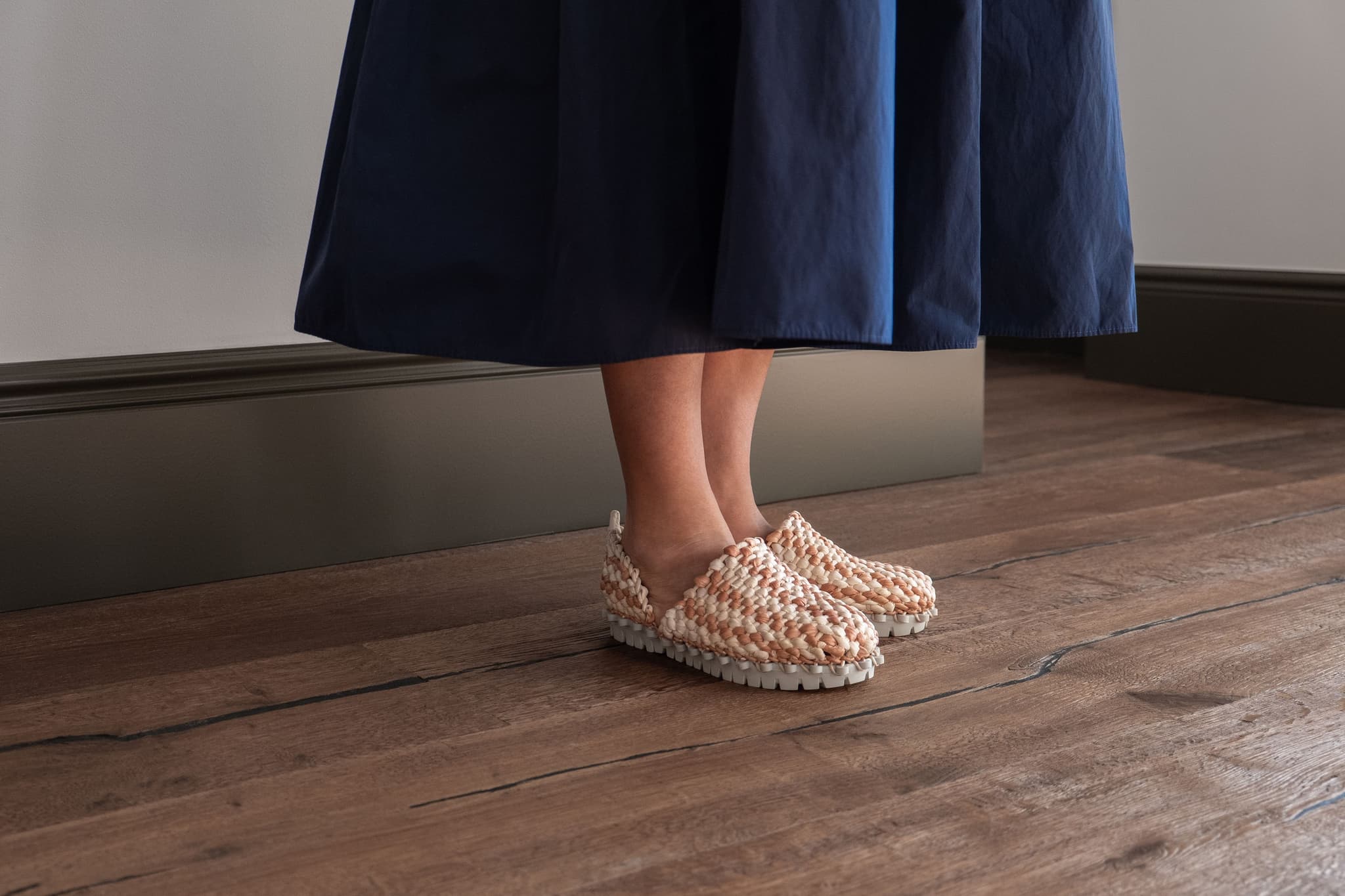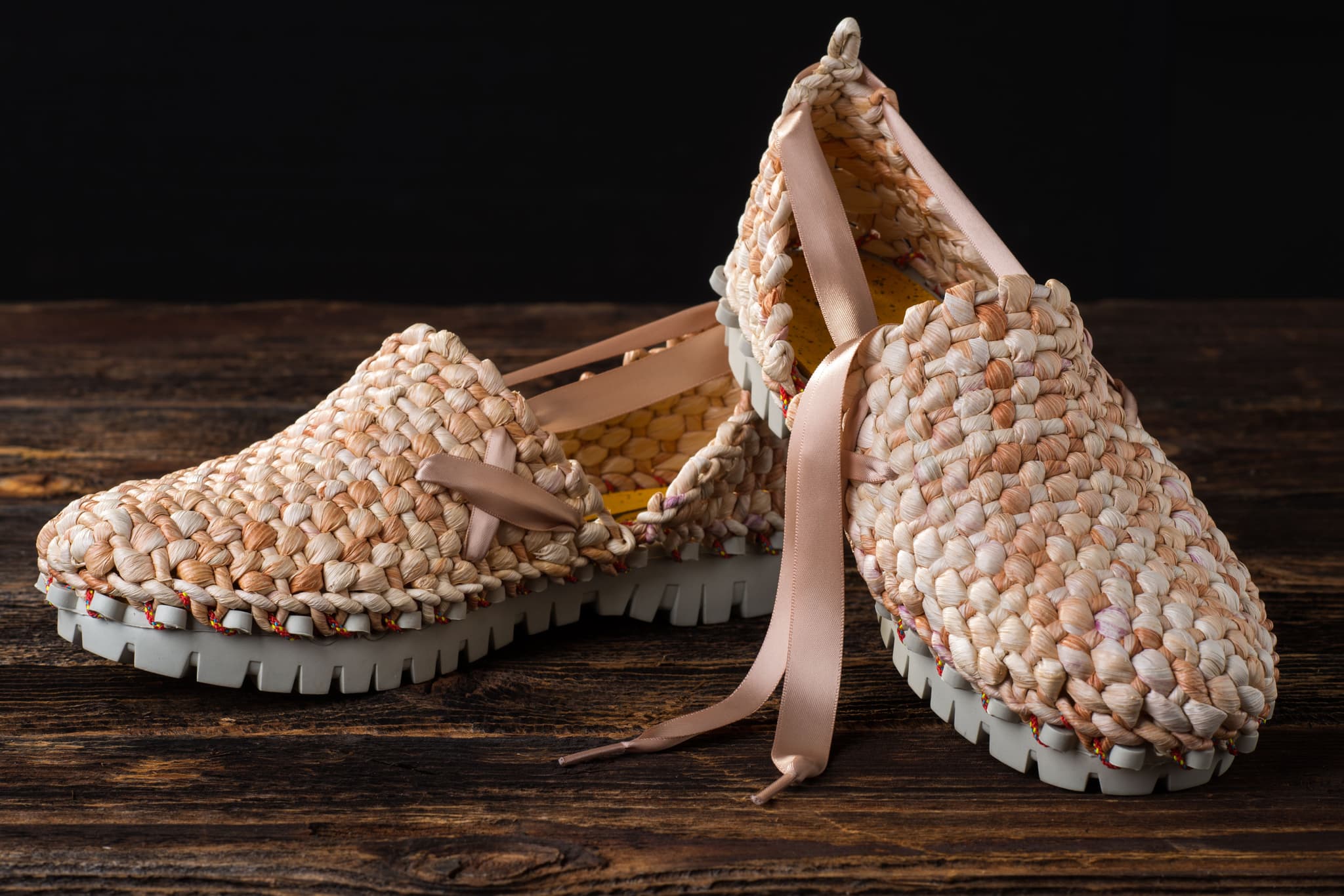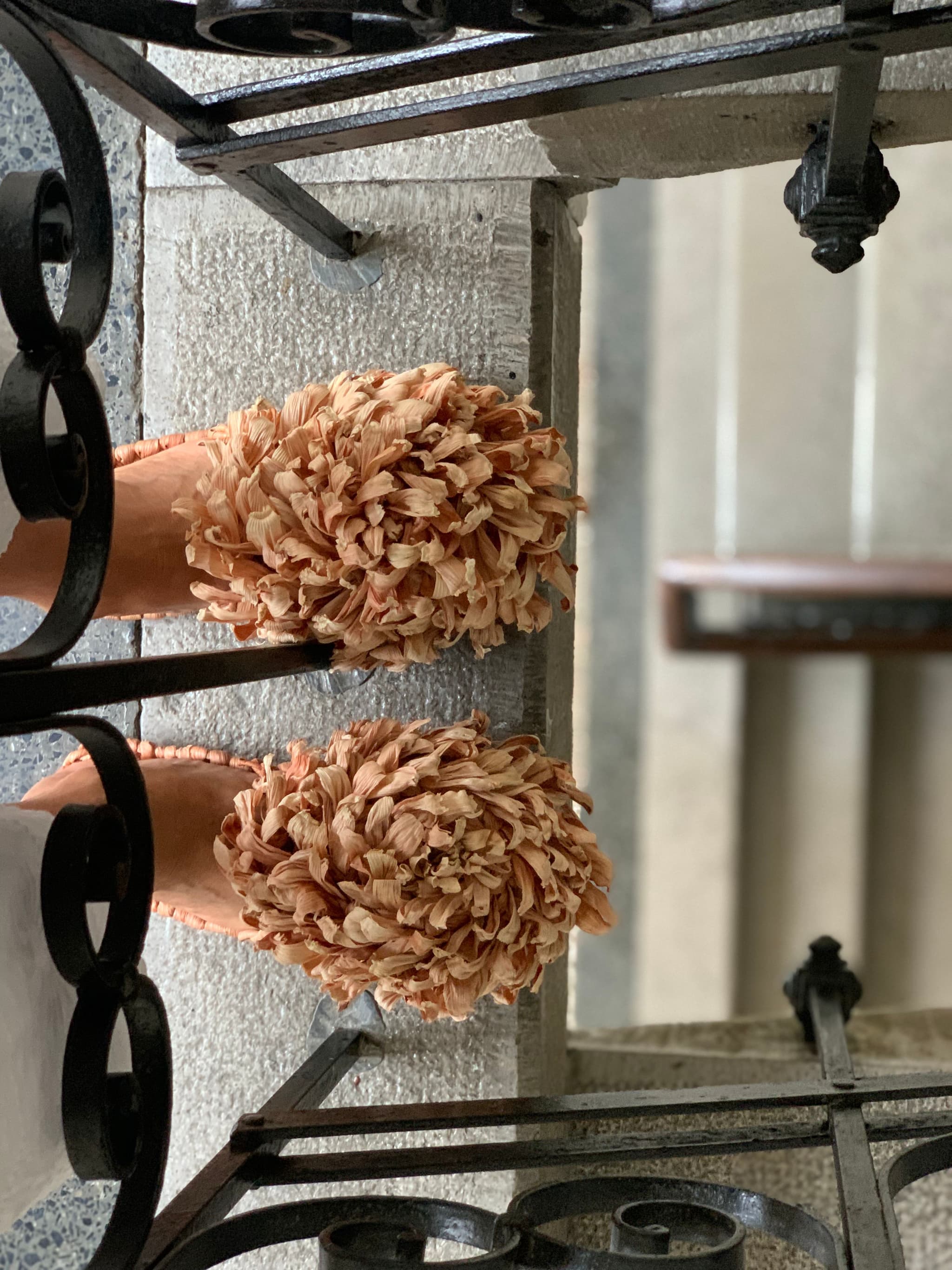Key Points
- Modular build: upper attaches with a cord (no glue); users replace parts at home to extend life.
- Upper: hand-woven corn husk (agri waste), 100% natural and home-compostable; sourcing requires manual harvest to avoid machine damage.
- Sole: Vibram® unit with 90% natural ingredients, built for 20–30 years of wear and recyclable in Vibram’s own system.
- End-of-life: product tag includes step-by-step composting guidance for the upper.
- Recognition: ‘Made in Slovenia’ design excellence award; platform for wider circular craft adoption.
Full interview with Darja Malesic
1. The Corn Dolly Shoes feature a modular design that allows for the replacement of individual elements. Can you explain the specific materials used in the upper and sole, and how each is chosen to maximize both sustainability and performance?
My core idea was to create a pair of shoes that could be repairable by the consumer without needing specialist tools, ensuring they wouldn't just end up as waste in a landfill. Corn Dolly’s modular design allows each component to be replaced or recycled as needed. The upper is crafted from hand-woven corn husk, a waste product from agriculture that requires no artificial processing. It is 100% natural, easily compostable, and surprisingly durable. The sole unit, sourced from Vibram®, is made from 90% natural ingredients and is also recyclable within Vibram’s industrial process, making it a sustainable choice.
2. You’ve mentioned that Corn Dolly Shoes are made from natural materials like corn husk and rubber. What challenges do you face when sourcing these materials, and how do you ensure their sustainability from production to disposal?
Sourcing corn husk for weaving comes with its own challenges. The husks used must be hand-picked from the fields, but modern agricultural methods, which are mechanized, often damage the husk. To overcome this, our weavers collaborate with farmers who allow them to manually harvest the corn on specific parts of the fields. After this, the husks are carefully separated from the corn and dried. It’s a time-consuming, specialized process. When it comes to the Vibram® rubber sole, we only choose products made from 90% natural ingredients, and it’s designed to be recycled within Vibram's own industrial systems. This ensures that even the sole remains sustainable from production to disposal.

3. The Vibram® rubber sole is made from 90% natural ingredients. How does this material contribute to the performance and longevity of the shoe, and what considerations do you make when selecting this material for its sustainability features?
I wanted to create a sole that would not only perform well over several years but would also be as sustainable as possible. Vibram® soles are renowned for their durability - something I prioritized to ensure that the shoes would last for years. The sole’s high percentage of natural ingredients and the fact that it can be recycled through Vibram's industrial system supports the concept of circular design. We made sure to select a material that would perform at the highest level but also align with our commitment to sustainability.
4. Given that Corn Dolly Shoes are designed with modularity in mind, how do you address the issue of wear and tear on the individual elements, especially considering their biodegradability or recyclability?
Everything wears out, but the beauty of modular design is that we allow each component to be repaired, replaced, or renewed individually, minimizing waste. Typically, the upper will need to be replaced before the sole. This gives the shoes a longer lifespan, as replacing just the upper allows the rest of the shoe to remain functional. When the upper reaches the end of its life, it can be home-composted without harming the environment. The Vibram® sole is highly durable, often lasting between 20 to 30 years. When it does eventually wear out, it can be sent back to Vibram's industrial recycling system to be repurposed. We designed these shoes to be repairable at home, eliminating the need for glues or synthetic adhesives. The upper is attached using a simple cord, so consumers can easily remove and replace it themselves.

5. The corn husk upper is designed to be composted when damaged. How do you ensure that users understand the importance of this feature, and what steps do you take to make the process of composting user-friendly?
At Corn Dolly, we believe composting should be simple and accessible. The corn husk upper is 100% compostable, and we make sure our users are fully informed about how to compost it. Each pair of shoes comes with a clear product tag and a step-by-step guide to ensure that users know how to properly compost the upper. We avoid synthetic coatings, so there’s no confusion- just natural materials that return to the earth without any harmful additives. Our goal is to turn the end-of-life process into an intentional and empowering act of sustainability for our users.

6. How do you see the footwear industry evolving in terms of sustainability? Do you believe modular footwear and the repairability of shoes can inspire other industries to adopt more circular models?
Not too long ago, there was a culture of repairing shoes - you’d find a cobbler in every town. However, the rise of synthetic materials and sport-shoe manufacturing over the last few decades led to a sharp decline in repair culture. Today, however, I believe attitudes are shifting, and there’s a growing desire for more sustainable solutions. At Corn Dolly, we see the act of repairing or replacing individual parts - rather than throwing away the whole product as a radical shift in mindset. When people can care for and personalize their products, they develop a stronger emotional connection, which leads to material longevity and more sustainable consumer habits. This mindset, in our opinion, can inspire other industries - from furniture to fashion - to adopt circular and user-driven models. Sustainability, for us, is about ensuring products are built to last and empowering users to maintain them.

7. As Corn Dolly Shoes received the ‘Made in Slovenia’ design excellence award, what does this recognition mean for the project, and how does it influence your approach to material selection and manufacturing processes?
Receiving the ‘Made in Slovenia’ design excellence award was a significant moment for me. It’s an acknowledgment of the value and relevance of the project, and it has provided us with increased visibility both locally and internationally. This recognition has opened doors to prestigious events like Design Weeks in Vienna, the Netherlands, and Zagreb, as well as other global exhibitions. It also reinforced my commitment to using high-quality, sustainable materials and to continually focus on authentic craftsmanship. This award has motivated us to remain dedicated to thoughtful design, with a circular approach that respects both people and the planet.

8. Looking ahead, how do you plan to expand or innovate within the circular design model? Are there any new materials or processes you are considering for future iterations of Corn Dolly Shoes?
A major part of our vision is to expand the community of weavers- inviting new voices and hands into the craft. This isn’t just about increasing production but nurturing intergenerational knowledge and creating a slower, more connected way of making. We are also exploring new biodegradable materials and low-impact processes that align with our core values. However, true innovation for us doesn’t lie in chasing novelty but in deepening relationships- with the materials, the makers, and the land that provides both. Our focus remains on scaling care, not just output.








